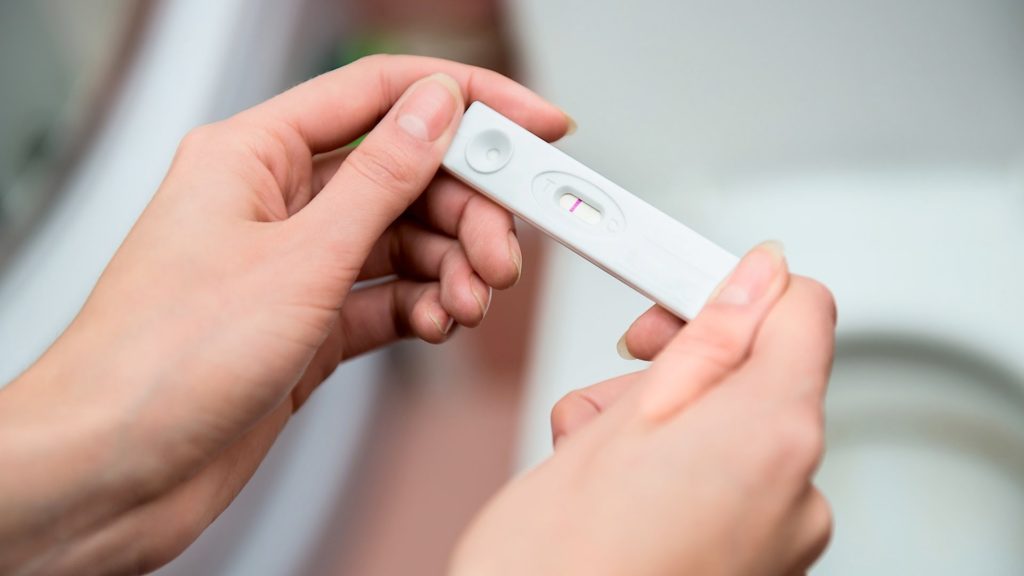Since the year 2000, assisted reproduction treatment (ART), including in vitro fertilization (embryos created in a lab), has become much more common in Canada. Public health experts have reacted: did this reflects a fertility decline? Not necessarily. Maybe couples are more favorable to TPA, but it could also be they are homosexual couples who opt in greater numbers this technique to become parents.
In 2012, researchers from four Canadian universities and an AHR clinic partnered with Statistics Canada to analyze a sample of heterosexual subjects who did not use birth control for 12 months; The women aged between 18 and 44 years. After eliminating the couples who had successfully designed, they found an increase in infertility rate compared to a similar sample made in 1992: 8.5%; it had risen to 15.7%.
Fertility declines with age. However, Canadians are slow-growing to children. In 1984, 3% of women had their first child after age 35 (at this age, the chances of conceiving are 77%). In 2008, the proportion had risen to 11%. Compared to other social changes such as the increase in the average age of marriage, this increase is part of an overall change in lifestyle.
Furthermore, obesity reduces the frequency of ovulation and may even stop completely disrupting hormonal secretions that trigger the process. The proportion of obese premenopausal women (including body mass index over 30) jumped 4% to 21% since the 1980s, yet there is a solution to this problem: in one experiment, 90% of obese Aussies no longer ovulating started to release oocytes after losing ten kilos.
Causes of infertility
- 40%: female infertility
- 30%: male infertility
- 20%: causes attributable to both sexes
- 10%: undetermined
Certain factors may make sterile men and women: alcohol, tobacco (smoking), cancer treatments, not to mention diseases such as sexually transmitted diseases and diabetes, which are also increasing. Whatever the causes, infertility is a heavy burden. A study published in 1993 in the Journal of Psychosomatic Obstetrics and Gynecology found that of a sample of 149 American women who were infertile in therapy, anxiety, and depression in infertile women were as vivid as those patients who were receiving therapy after I learned they had cancer. Other results corroborated by the scientific community suggest that men are less disturbed than women, especially if there is an infertile factor of the couple, even if they are less inclined to talk.

Age of the father
The effects of aging on female fertility are well established, but the age of the partner seems to be also important. A British survey in 2002 (one of the newest in this area) with over 1800 couples expecting a child has demonstrated the following:
Middle period (after re-evaluation statistics) between the first tests and design (months)
Age of man
- less than 25 —- 7.0
- 25-30 ———— 6.9
- 30-35 —— ——9.3
- 35-40———— 11.4
- 40-45———— 12.4
- 45+—————37.2
It is recommended to wait two years before an infertility evaluation.
However, if you are anxious, consult a specialist in infertility and expose him to the reason for your anxiety: he will judge whether to make examinations or wait a year for regular reporting. If there are obvious problems, such as irregular periods occur, for example, every two or three months, then you can see after a year. But in some cases, it is unnecessary to wait to make an assessment. For example, if your mother was very young menopausal, your spouse surgery for testicular not down, you had salpingitis. You should know that miscarriages occur frequently. A woman can even make two consecutive without this being any sign of trouble. However, beyond three miscarriages, it is appropriate to begin a series of tests to determine if there is a medical cause for these events.


Consulting the couple
Yes, that’s better. In 30% of cases, infertility is female, and also in 30% of cases, it is masculine. Finally, mixed for 40% of couples. Namely: sometimes infertility unexplained, that is to say, without apparent cause, in over 10% of cases. To find the most effective treatment, it is essential to see both partners. Especially since the first question asked by the doctor directly concerns them, what is the frequency of sex? The regularity of the rhythm of about 2 to 3 weekly reports required to enter the race to the baby.
What questions do you ask the couple?
All infertility evaluation begins with a somewhat probing examination. Before starting the analysis, the doctor needs to know more about medical history: there he had infections or surgeries genital area? Are the rules fair? The doctor asks such a man if his testicles have dropped into the scrotum at birth? At what age the first sperm emissions occurred? If there were some infections (mumps, or infection of the genitals)? If he takes regular medication? If they have already had radiation or chemotherapy? Finally, the doctor looks at the daily lifestyle: if you smoke, fertility is reduced. Stress levels, weight, the intensive practice of a sport can also influence.


Feel ready to have a baby
Which psychological factors are powerful enough to induce the blockage of motherhood? Before the child was an omnipresent threat, we were playing with fire; the child came from the unknown sexual desire of a man and a woman and the inevitable risk you took by love. Now women who want a child should stop taking the pill or have a coil removed. With contraception, responsibility shifted toward the woman. What seemed a liberation turned into anguish too heavy load to carry. Consciously and unconsciously, a lot of questions arise: Is this the man I want? Is this the right time? Is what I’m ready for? And if it goes wrong? The result, it blocks! This new freedom, impossible, causes movement of the time of the decision to the limits of the risk of failure. Women thus enter into a logic of the challenge.


PMA can not solve everything
Since the birth of Amandine, the first test-tube baby, media extol the spectacular successes of reproductive medicine. Thanks to technological advances, everything becomes possible, then that is what we hear everywhere. Women rely on medicine to decipher their missing child; they want to find solutions outside of them, blindly calling into the doctor’s knowledge as a hypnotist. Convinced of medical omnipotence, they engage in the very heavy treatment, stressful for the body and the psyche, with an obsession with success, which hampers results. It’s a vicious circle.

Possible Treatments
The proposed treatments depend on the causes of infertility found during medical investigations. They also fit the age of the couple, his medical history, and the number of years they have had infertility. Despite the variety of existing treatments, some causes of infertility are not corrected. In humans, drugs or behavioral therapy can cure certain disorders of ejaculation and allow the couple to conceive a child. If there is an insufficient number of sperm in the semen, hormones prescribed to correct this problem or surgery can sometimes be proposed (to correct a varicocele, dilated veins of the spermatic cord, located in the testes, by example).
In women, hormonal treatments in the case of menstrual disorders effective. Treatments such as clomiphene citrate (Clomid by mouth) prescribed to stimulate ovulation. This drug is effective in the case of hormonal imbalance as it acts on the pituitary, a gland that secretes hormones that trigger ovulation. Several other hormones are prescribed by injection to stimulate ovulation. If hyperprolactinemia, bromocriptine may also be prescribed.
In some cases, surgery is required. If the fallopian tubes are blocked, an operation can cure this disorder. In the case of endometriosis, medication to stimulate ovulation or in vitro fertilization necessary to hope to conceive. Assisted reproduction techniques are, therefore, sometimes necessary in cases of infertility. In vitro, fertilization is the assisted reproduction technique most frequently used. Human sperm is brought into the female egg in the laboratory, then the embryo is reimplanted in the uterus of the future mother (IVF).



